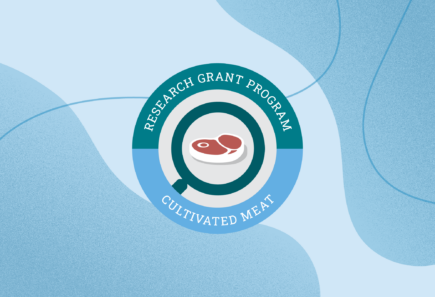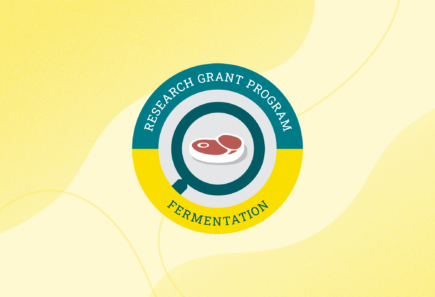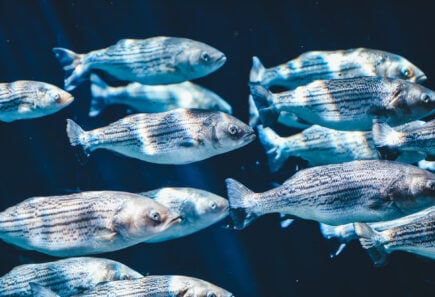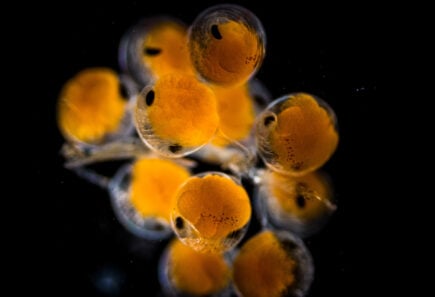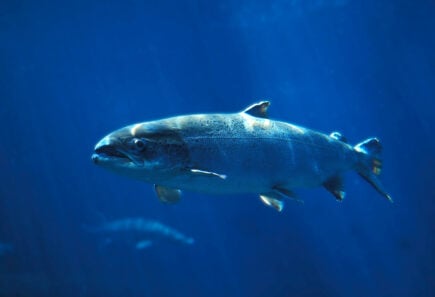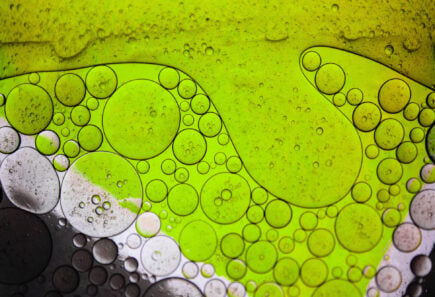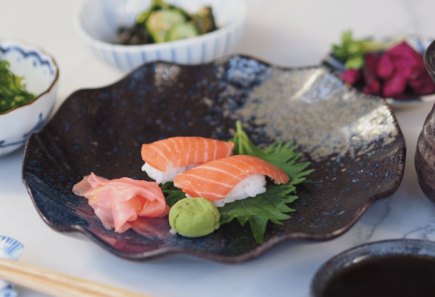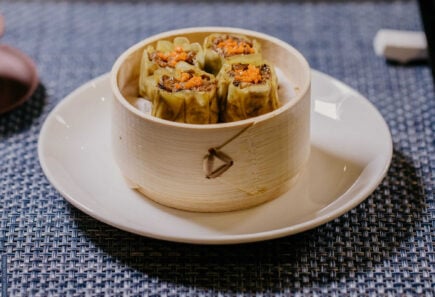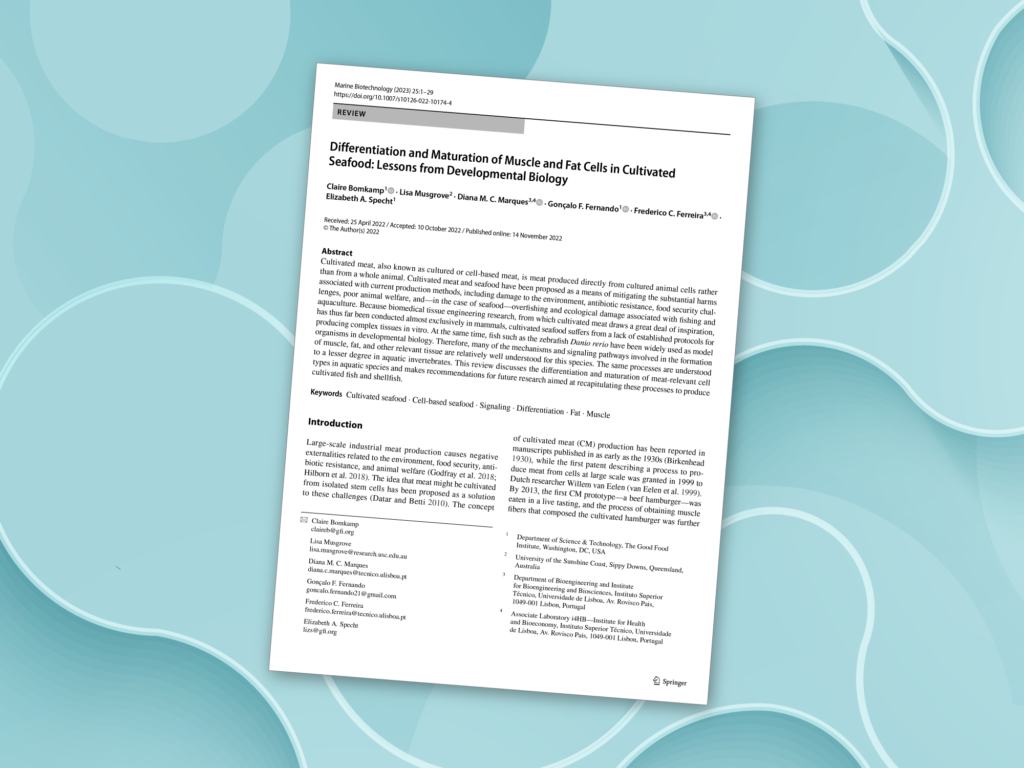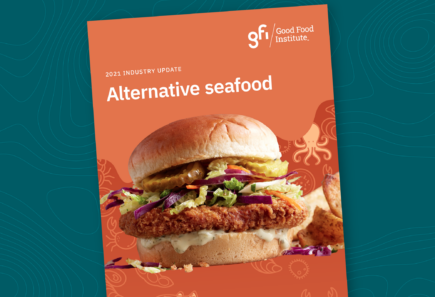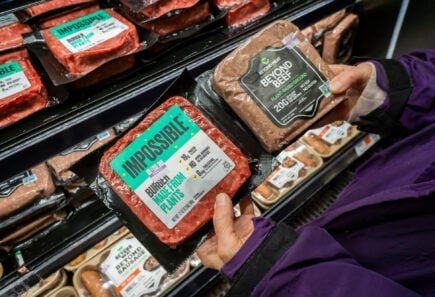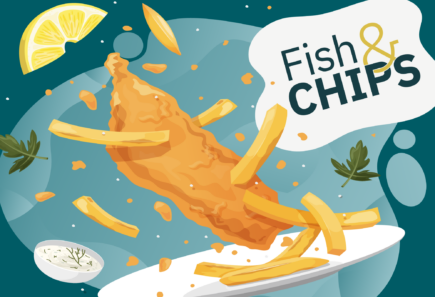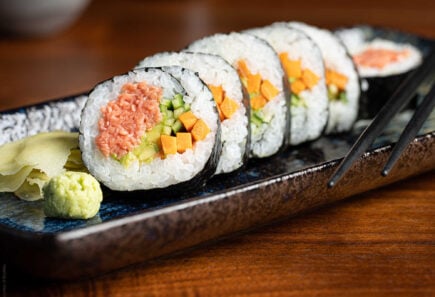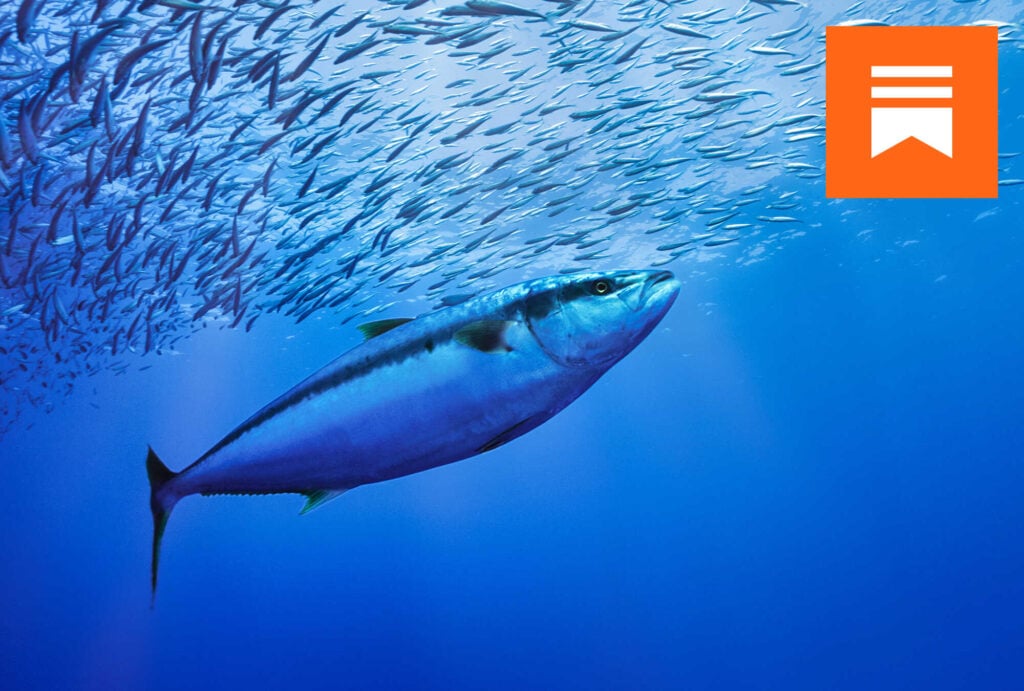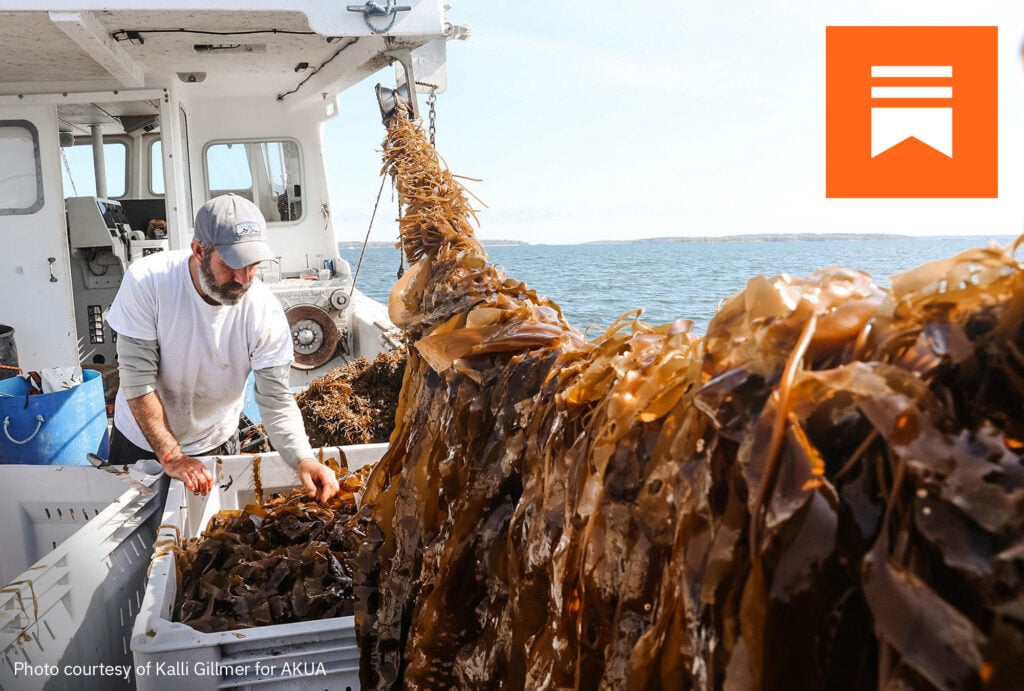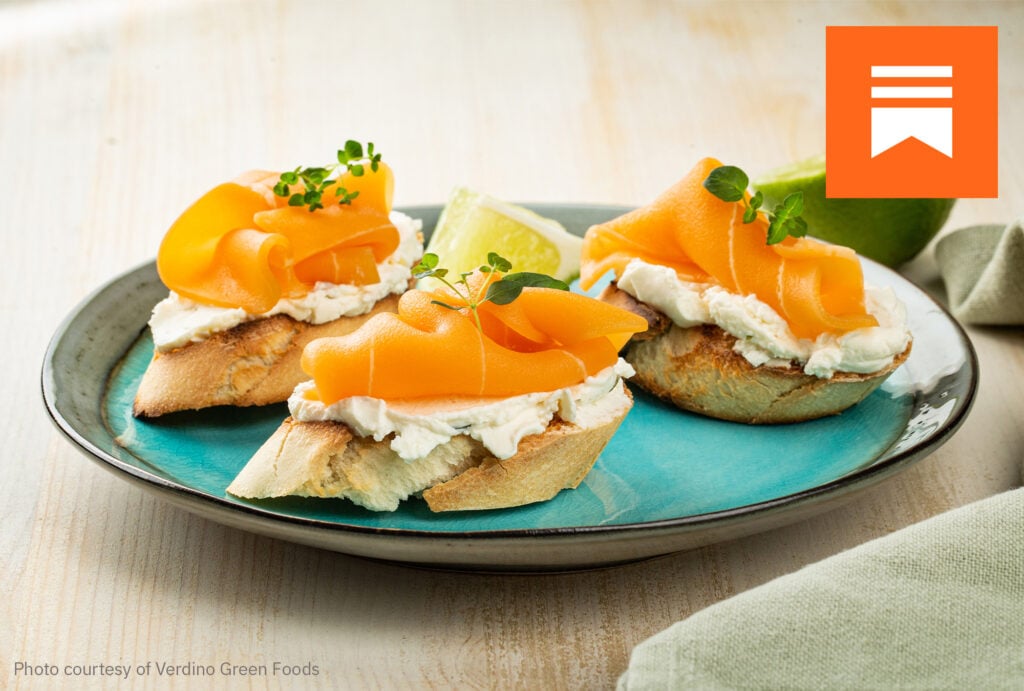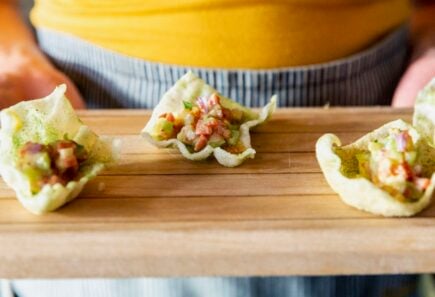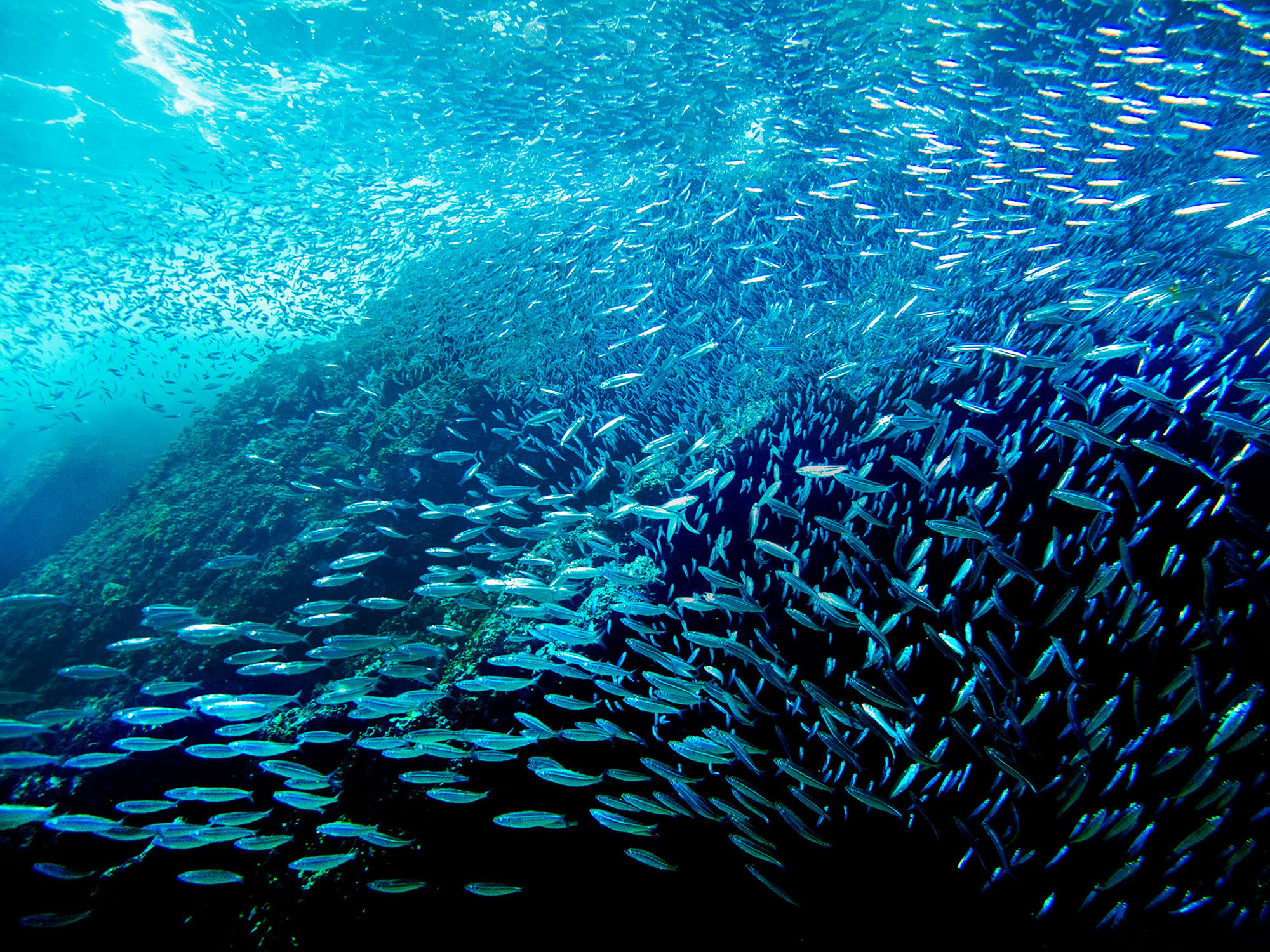
Sustainable Seafood Initiative
The welfare of billions of people and the stability of life on earth depend on healthy oceans. Overfishing has driven numerous species to extinction and ecosystems to the point of collapse. Shifting to plant-based, cultivated, and fermentation-derived seafood is the most tractable way to improve our oceans’ health.
Stay in the loop
Sign up for one or all of our newsletters!
Why alternative seafood
We help empower innovators to create delicious, affordable plant-based, cultivated, and fermentation-derived proteins. We aim to make the sustainable choice the default choice. There is arguably no more urgent product category for this approach than seafood.
Seafood poses unique challenges for innovators, and our Sustainable Seafood Initiative provides targeted research and support to accelerate this sector. Here are some of the factors we believe will make alternative seafood successful.
These benefits create an opportunity for plant-based and cultivated seafood to provide healthier, more ocean-friendly, and ultimately less expensive alternatives to conventional seafood.
Independence from population & geographical constraints
Alternative seafood doesn’t rely on wild population productivity or geographical considerations. Supply chains and raw materials for alternative proteins are significantly less constrained than conventional seafood supply chains, so plant-based and cultivated seafood can be produced consistently.
Manufacturing facilities for plant-based and cultivated seafood don’t need to be located near sensitive, expensive, and overburdened coastal areas. Instead, they can be built where consumer demand is, creating good jobs anywhere.
Highly efficient inputs
We can make alternative seafood products from highly efficient protein sources, such as fungi, with the potential to use byproduct streams and residual biomass from other sources like feedstocks. Essentially, we can make more seafood with fewer natural resources and far less harm to our environment.
Fewer health risks
Fish and shellfish are two of the eight most common food allergens. These top eight allergens cause more than 90% of food allergic reaction episodes in the U.S. Plant-based and fermentation-derived seafood can allow people with allergies to safely enjoy these foods.
Additionally, some people limit seafood consumption because they are concerned about high levels of mercury and other toxins. The FDA advises those who are pregnant or breastfeeding to avoid certain species of fish completely. Alternative seafood also has the potential to substantially limit these risks.
Reduced loss in supply chain
Plant-based products have a longer shelf life and don’t need as much costly refrigerated transportation. They also provide an attractive opportunity for local production in landlocked areas.
Further, the production processes for plant-based, cultivated, and fermentation-derived seafood are more controllable and predictable. This allows for better real-time response to demand and more customized end products that precisely meet consumer needs. We can produce valuable cuts, product formats, and species of seafood products without generating low-value byproduct waste.
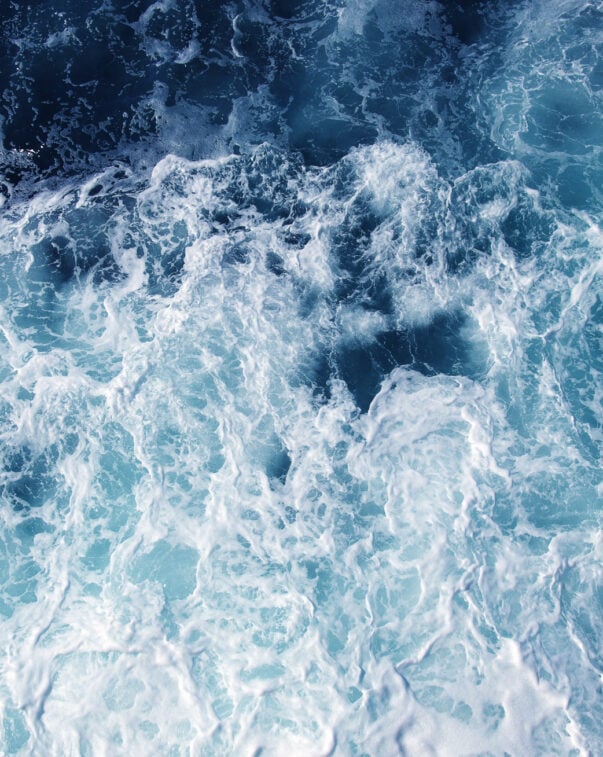
Resource
Action paper: An ocean of opportunity
This action paper explores alternative seafood’s role in creating a sustainable, secure, and just food system.
Our grantees
Thanks to our donors, we can offer research grants for high-impact projects to push forward the science of alternative proteins, including several projects focused on seafood. Learn more about the exciting work of our current and past grantees.
Previous projects
GFI-funded seafood research publications
Explore published research on alternative seafood funded by our research grants program.
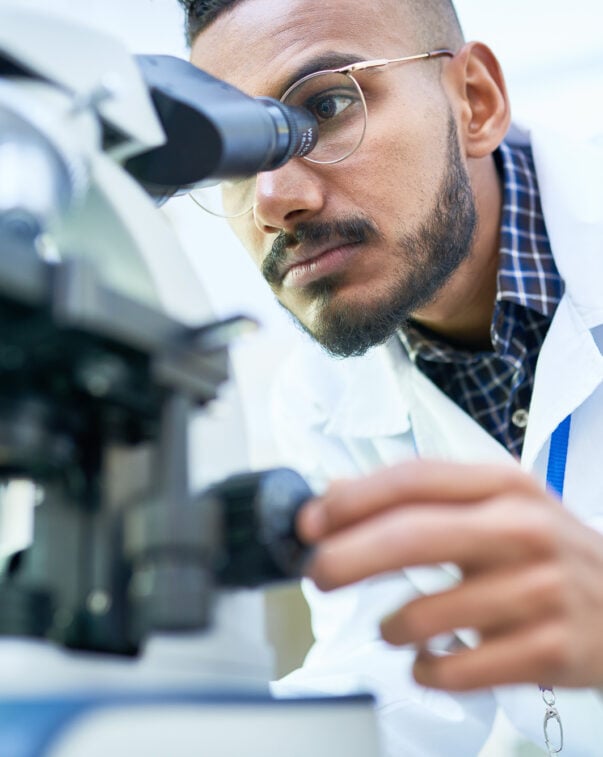
Find research funding
If you are a scientist interested in alternative seafood, we would love to explore ways to work together! Firstly we recommend signing up for our alternative protein research directory and our newsletter, The Grazer. These resources provide access to exciting news, information, and funding opportunities that you may be interested in.
Funding opportunities can also be found in our research funding database and thanks to support from philanthropic partners, we also provide research funding opportunities through our field catalyst program. Our calls for this program focus on several specific technical topics each year and may include topics specific to seafood and others that apply to multiple product categories.
The science of alternative seafood
Bringing tasty and sustainable plant-based, cultivated, and fermentation-derived seafood products to market at scale will require several scientific advances. We help track the current state of the science, high-priority research ideas with the potential to move the field forward, and how researchers can access the research tools they need to make it all happen.

Resource
Expanding access to cell lines
Limited access to cell lines is a significant challenge for cultivated meat research. GFI is working to expand access and support the development of new cell lines.
Aggregating seafood data
Our open-access seafood databases aggregate information about the properties and impacts of conventionally produced seafood to accelerate the development and commercialization of alternative seafood. A deep understanding of the molecular and structural signatures that define consumer experiences—like taste, aroma, and texture—is critical for developing alternative seafood products that replicate these sensory experiences. We also need to understand the impacts of different types of conventional seafood production so we can target our efforts toward the highest-impact areas, and we need to understand what products are likely to be viable from a market perspective.
We have worked to compile existing research in a user-friendly format with a tool called Phylogenetic Index of Seafood CharactEriStics (PISCES). This tool contains available research for over 250 marine species, including cell lines, curated research papers, genome sequences, taxonomies, nutrition profiles, and greenhouse gas footprints.
PISCES is integrated with our Archetype Library for Alternative Seafood (ATLAS), which presents data on an archetype level (defined as food-relevant categories such as salmon or shrimp) to help users prioritize groups of species for alternative seafood based on environmental impact, human health, animal welfare, and market size.

Resource
Aggregating data for alternative seafood
Use our open-access databases to explore how scientific taxonomies and evolutionary relationships map onto culinary categories of seafood.
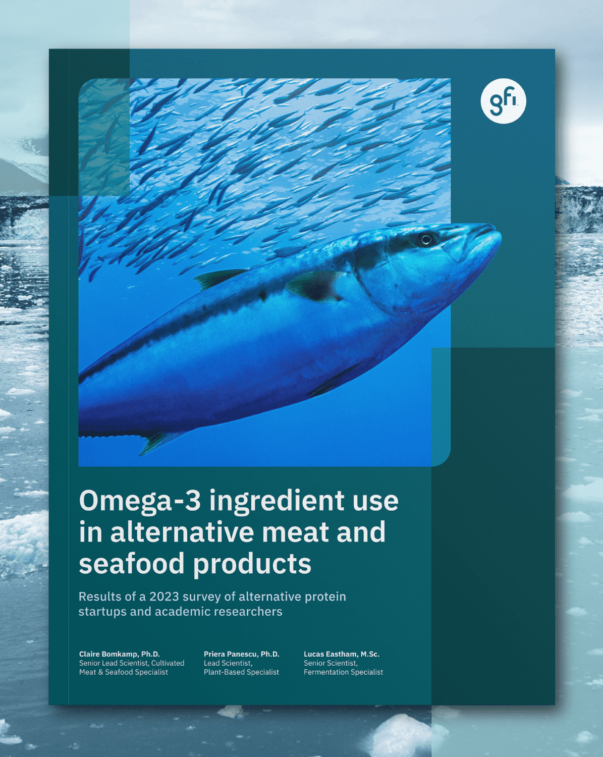
Resource
Omega-3 ingredient use in alternative meat and seafood products
Discover our report summarizing 2023 survey results on omega-3 ingredient use and future plant-based meat and seafood production needs.
Deep dives
Learn about the science of alternative seafood and the challenges that must be addressed for commercial production.
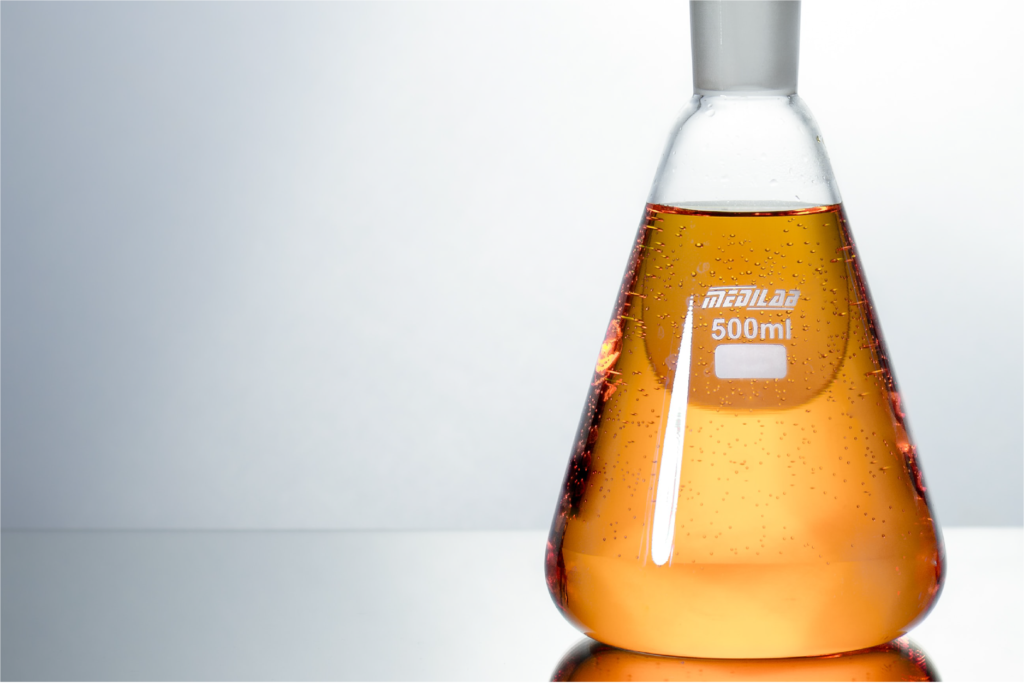
Cultivated seafood cell culture media
Although aquatic animal cell lines have been successfully cultured, the field is in its infancy compared to terrestrial vertebrate cell culture, and these cells’ needs may be substantially different. Learn more about cell culture media used in cultivated seafood production.
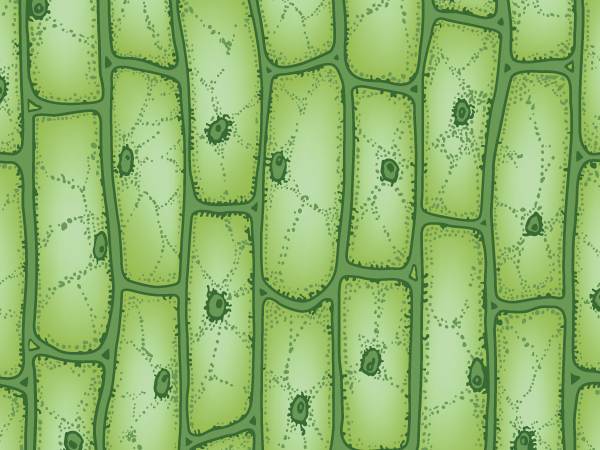
Cultivated seafood scaffolding
The fundamental challenge in developing scaffolds for cultivated seafood is the same as for cultivated terrestrial meat. However, species differences in tissue architecture need to be considered. Learn about scaffolding materials and methods for cultivated seafood.

Cultivated meat & seafood end products
Cultivated meat and seafood end products will have a lot in common with conventional meat. They also present opportunities for innovation and open-access research. Learn more about cultivated end products, with considerations specific to seafood discussed throughout.
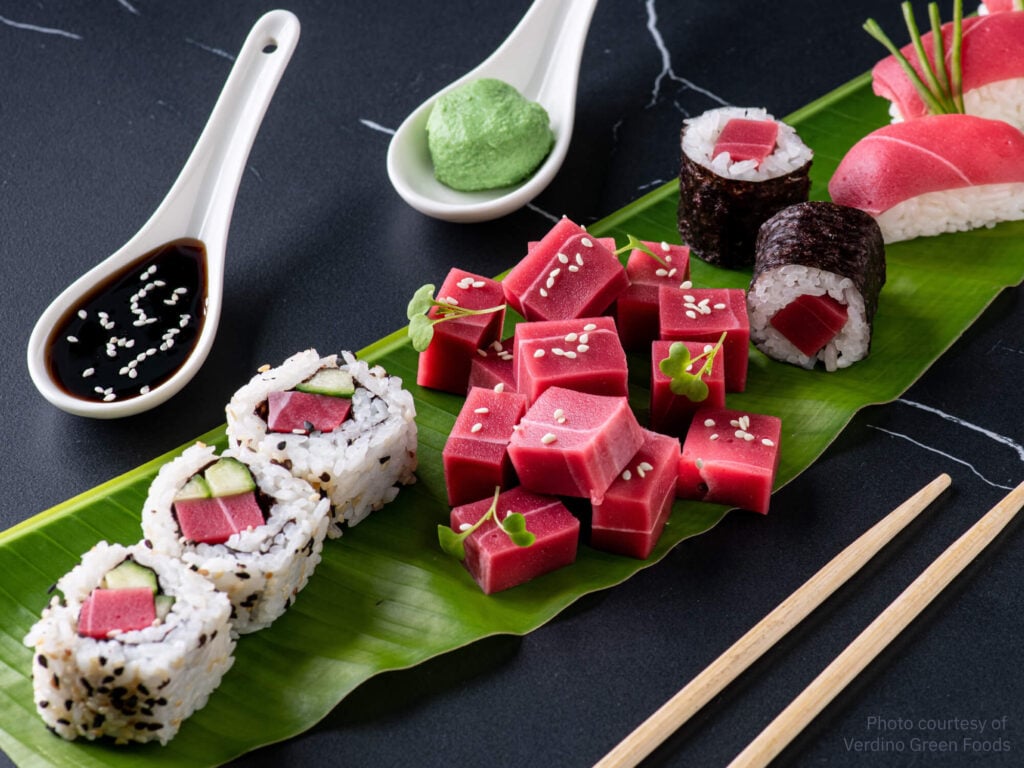
Plant-based meat and seafood end-product formulation and manufacturing
Learn more about crop-derived macromolecular ingredients, their applications in plant-based meat and seafood formulations, and protein texturization techniques.
Explore alternative seafood literature
Want to dive into the literature on alternative seafood, but not sure where to start? Our list is a curated set of academic papers and other resources to help get you started.
Research ideas
We identify, prioritize, promote, and track the most promising solutions to accelerate the alternative protein industry. Tap into our solutions work to discover ideas for research projects, find inspiration for new commercial ventures and products, and explore ecosystem-level interventions to support the industry as a whole.
Featured resources
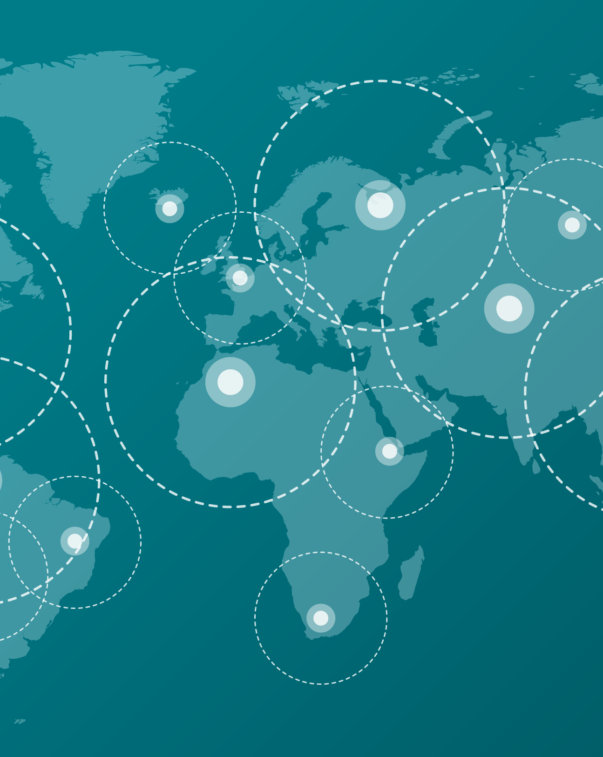
Page
GFIdeas Community
Learn from and network with experts in alternative protein. GFIdeas is a community for entrepreneurs, scientists, students, and subject matter experts.
Upcoming events
Fish & CHIPS (Collaborative Huddle for Ideation and Problem Solving) is a virtual event series where cultivated seafood innovators get together to discuss their current challenges and brainstorm solutions. We hold these events three times per year, usually in March, August, and November. If you’re actively working on anything to do with cultivated seafood—whether in academia, industry, policy, or otherwise—and would like to have open conversations to help shape the future of this industry, please consider joining us!
We also host regular webinars, workshops, and other events, including our Science of Alt Protein webinar series where leading researchers present their work, our Business of Alt Protein webinar series focused on industry challenges, and more. Upcoming events with a specific connection to seafood are listed below, or you can check out the full list of events.
Watch past webinars
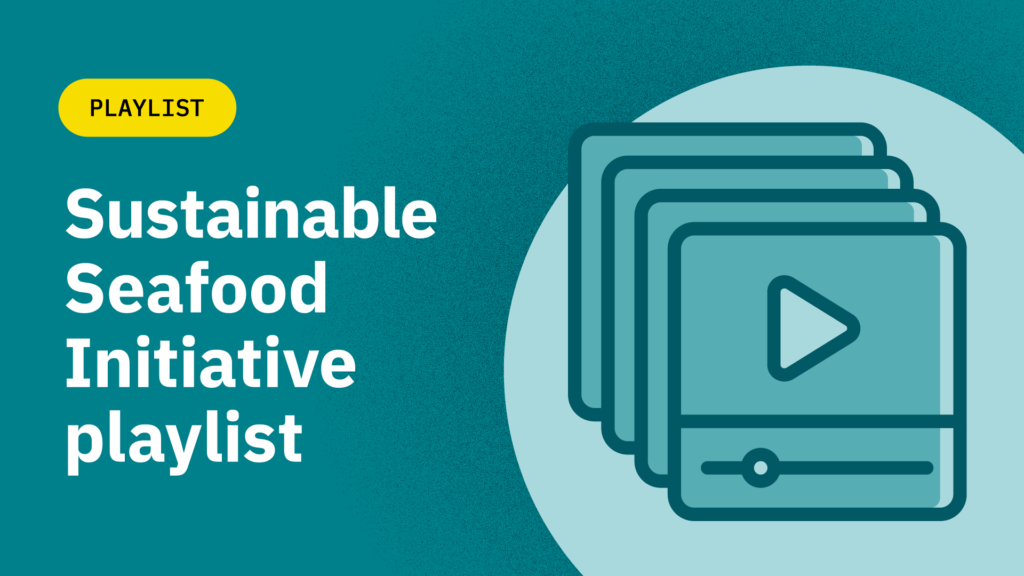
The latest in sustainable seafood

Our collaborators
Our Sustainable Seafood Initiative is a proud Mission Blue Partner. Led by legendary oceanographer Dr. Sylvia Earle, Mission Blue works to ignite public support for a global network of marine protected areas. Former GFI Director of Science & Technology Liz Specht sat down with Dr. Earle for a fireside chat to discuss the unique challenges and opportunities for plant-based and cultivated seafood.

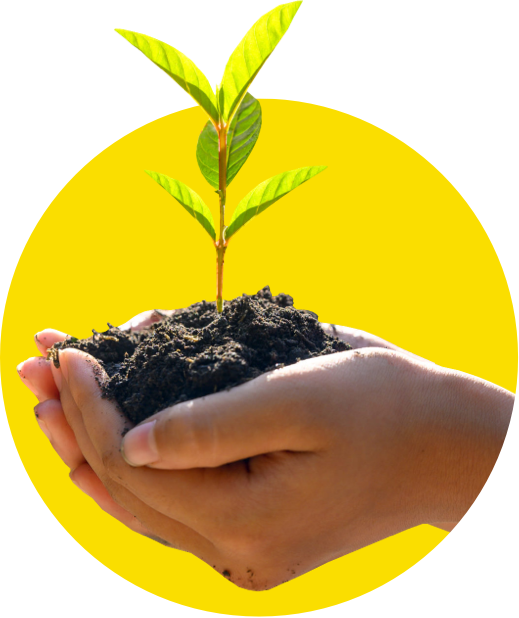
Support our work
Our Sustainable Seafood Initiative and all of GFI’s research grants are made possible thanks to our global family of generous donors. Philanthropic support is vital to our mission. Connect with us today to discuss how you can help fuel this transformative work.
